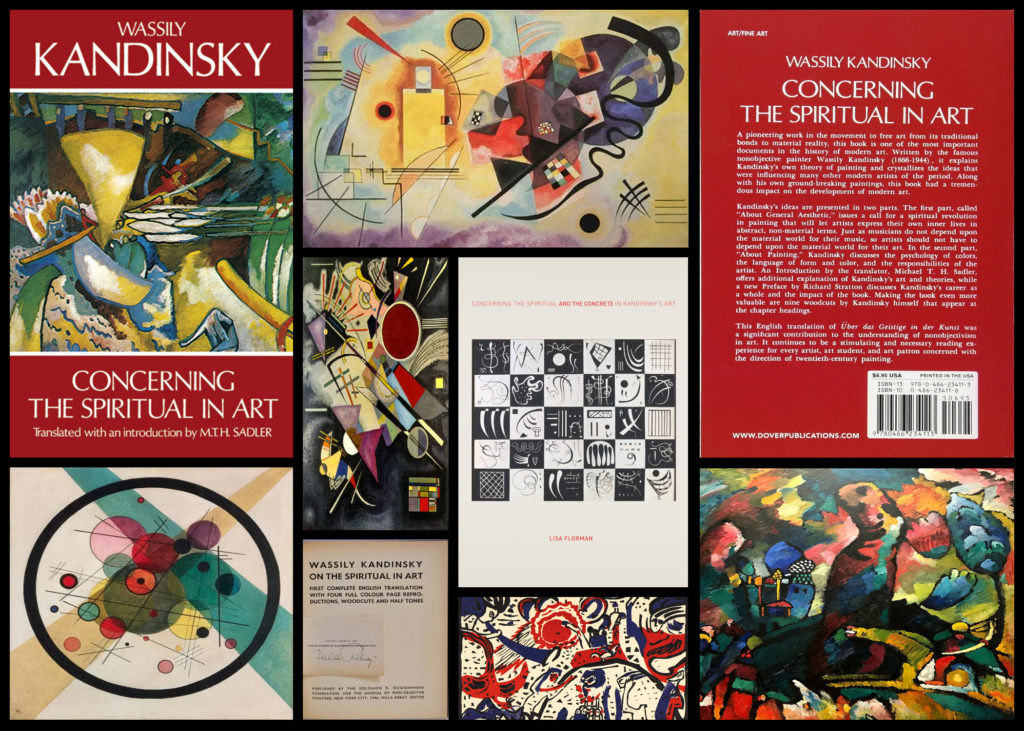Who is he?
Born in Moscow in 1866, Wassily Kandinsky took up the study of art in earnest at age 30, moving to Munich to study drawing and painting. A trained musician, Kandinsky approached color with a musician’s sensibility. An obsession with Monet led him to explore his own creative concepts of color on canvas, which were sometimes controversial among his contemporaries and critics, but Kandinsky emerged as a respected leader of the abstract art movement in the early 20th century. In Munich, Kandinsky was accepted into a prestigious private painting school, moving on to the Munich Academy of Arts. But much of his study was self-directed. He began with conventional themes and art forms, but all the while he was forming theories derived from devoted spiritual study and informed by an intense relationship between music and color.
Color became more an expression of emotion rather than a description of nature or subject matter. He formed friendships and artist groups with other painters of the time, such as Paul Klee. He frequently exhibited, taught art classes and published his ideas on theories of art. He had already formed the New Artists Association in Munich; the Blue Rider group was founded with fellow artist Franz Marc, and he was a member of the Bauhaus movement alongside Klee and composer Arnold Schoenberg. Back in Germany after clashing theoretically with other artists, he taught at the Bauhaus school in Berlin and wrote plays and poems. In 1933, when the Nazis seized power, storm troopers shut down the Bauhaus school. Although Kandinsky had achieved German citizenship, World War II made it impossible for him to stay there. In July 1937, he and other artists were featured in the “Degenerate Art Exhibition” in Munich. It was widely attended, but 57 of his works were confiscated by the Nazis.
What is the book about?
The book acts as a reflection of anticipating “the spiritual turning-point” where Kandinsky looks at how this could occur within people. To do this Kadinsky looks at the artistic meanings of the psychology of colour, the compositional interrelation of forms etc. As a result of this her main goal as an artist becomes the constant search to find the very innermost necessity that can be found within the spiritual foundations of any individual. When looking through the initial pages of the book it is made very clear that Kadinsky is trying to anticipate the emergence of abstract art as the purest form of influence on the human soul, allowing many to view the future optimistically, foretelling the upcoming emergences of spirituality. Some examples of the book and its content can be seen below:

After reading through a bit of his book and looking over some of his artwork, I decided to go onto analyse a piece of his work that for me summed up his points stated in the book and his link between spirituality and the individual. The image I have selected is called ‘On White II’, and was created 1923:

Visual: The piece overall is very aesthetic through its contrasting bright colours and the use of negative space to create feeling within the blocks and random assortment of shapes jotted around. The bright colours for me draw a sense of happiness linked together with gloom, this is due to how the vibrant colours compliment each other bringing about a sense of joy, however contrasted to this is the darker greens and black which for me derives the image of its joy and instead implemented some underlying perspective of loss of gloom which could potentially be interpretted.
Technical: When looking over the image its clear that though the image looks like a random assortment of coloured shapes each piece has been carefully placed to be as effective as possible to that it can impact the viewer through its paint splatter like composition. The use of black within allows to break up the overlapping shapes which otherwise would have become too overpowering without a border. For me the use of the negative space occationally included with a few black lines adds to the overall effectiveness due to how it boxes in and compresses the piece so that it is only confined to one area making it as a result more minimalist.
Contextual: Kandinsky used an array of geometric shapes and lines in a colourful and riotous contemporary display, prompting many artists to imitate his style. On White II, is located at Georges Pompidou Centre, Paris, France. As the title suggests, white is predominant in this painting, including the background. Kandinsky used white to represent life, peace and silence. The majority of the geometric shapes are presented in a variety of colours, reflecting the artist’s love for the free expression of inner emotions. Striking through the kaleidoscope of shapes and colours are bold, spiked barbs in black, representing non-existence and death. Kandinsky liked to paint while listening to music, and On White II, is his interpretation of the music, as created by his inner consciousness. The abstract and possibly mesmerising display of shapes and colours can be compared with the complexity of a musical composition.
